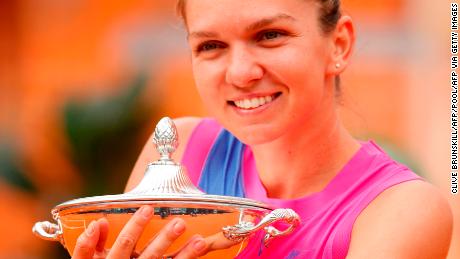While fans have been able to binge on near-wall-to-wall action in September, for players the situation has been rather more difficult to navigate as they have been forced to choose their movements wisely.
Picking an outright favorite between the two top seeds is a near-impossible task.
Nadal, on the other hand, has an unparalleled record at Roland-Garros having won 12 titles in the past 15 years. Victory in Paris would see him equal Roger Federer’s men’s record of 20 grand slam singles titles.
“A lot of people will agree, he’s the number one favourite and the record that he has there, the history of his results, you just can’t put anyone in front of him,” said Djokovic, who surpassed Nadal’s Masters 1000 record with his recent victory in Rome.
“But definitely Diego (Schwartzman, who beat Nadal at the Italian Open) showed that Nadal is beatable on clay … Even though he is the number one favorite, there are players that can win against him there.”
Halep the favorite as Serena continues pursuit of 24
The Romanian is on a 14-match winning streak, stretching back to February, but has dismissed feeling any extra pressure because of her recent record.
“I’ve been No. 1 and playing a grand slam (before), so that’s more (pressure) than now.
“I’m not going to think about that. If people think that I am a favorite, well, I’m not thinking about that because every match is a battle and everyone wants to get it so badly.”
Rome finalist Karolina Plsikova, former world No. 1 Elina Svitolina and Australian Open champion Sofia Kenin are all behind Halep in the seedings, while Serena Williams continues to chase a record-equalling 24th grand slam title.
Williams, who turns 39 on Saturday, has fallen in four finals since her last grand slam victory in 2017. Her three titles in Paris — the last coming in 2015 — are more than any other player in the women’s draw.
Adapting to clay
Part of the challenge players face with a crowded schedule is managing the transition between hard and clay courts in a short space of time.
“I think it’s from playing so many tough matches in a row,” the former world No. 1 said after her withdrawal in Rome.
“Even if they weren’t all three-set matches, they were still on clay, which is quite a fast switch from hard courts.
“The sliding and running in the last two matches, I began to feel it … and it grew with every day.”
Fans on-site
While fans were excluded from the US Open, French Open organizers initially planned to have 5,000 people in attendance each day.
However, that number has now been reduced to 1,000, French prime minister Jean Castex announced on French TV program “Vous avez la parole” on Thursday, given the current coronavirus situation in Paris.
This year also sees the addition of a new retractable roof on Philippe-Chatrier court, meaning play can go on into night if necessary.
Face masks, social distancing and physical partitions in the stadium have all been enforced and those on-site for a long period will be subject to coronavirus tests at various intervals throughout the tournament.
Players have been tested upon arrival in Paris and will be approved to play if they return negative tests then and again 72 hours later.
They will also be tested every five days, as long as they remain in contention, and must stay in one of two hotels arranged by tournament organizers.



